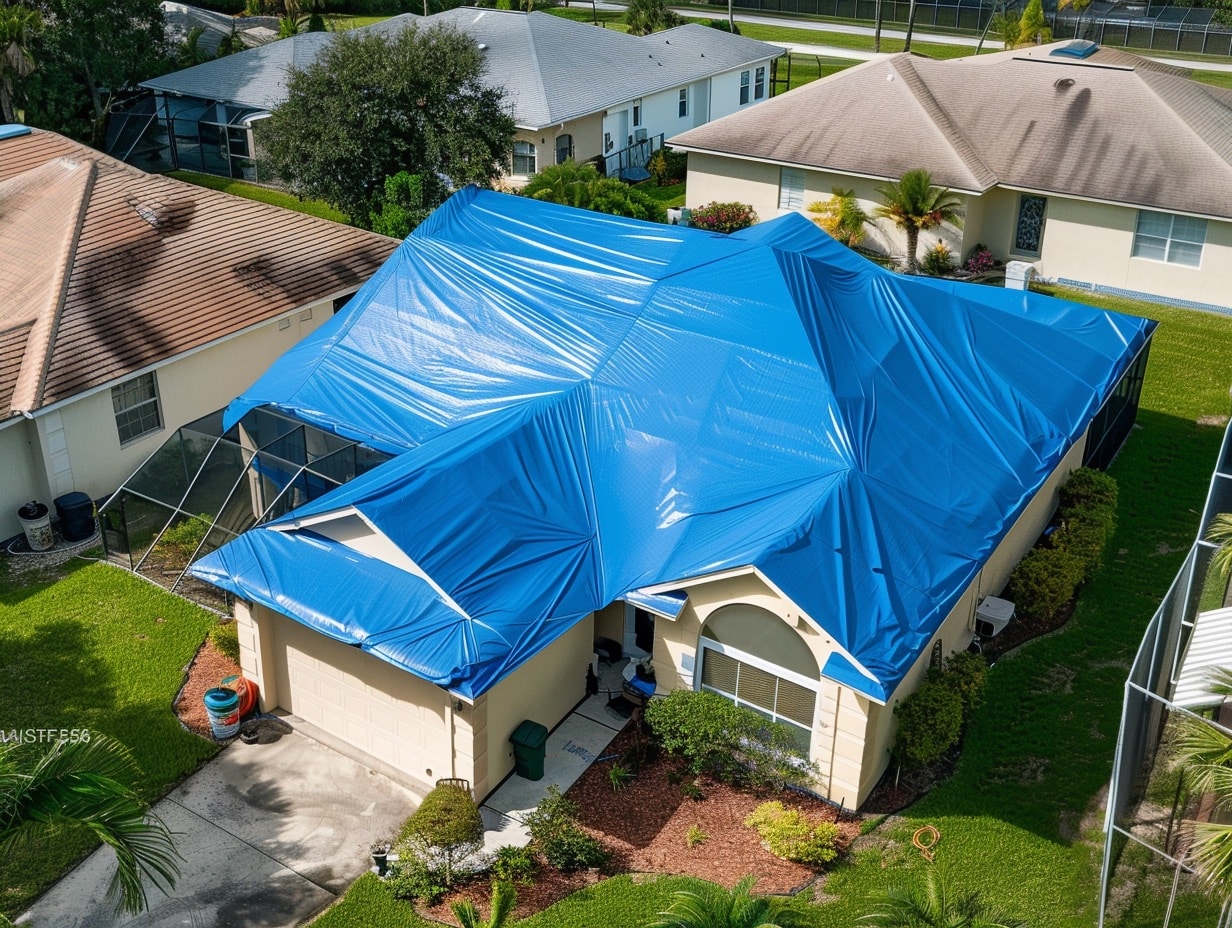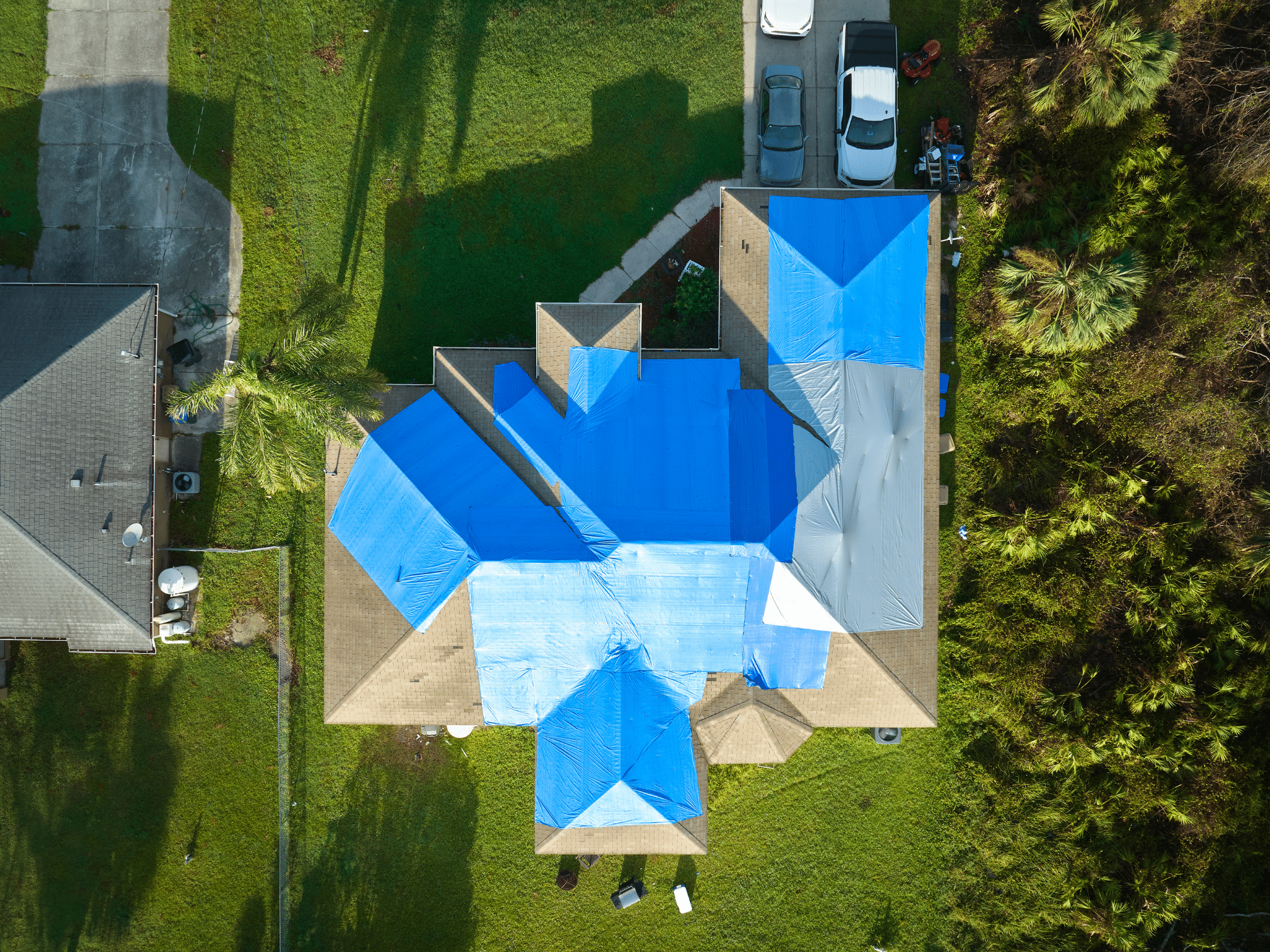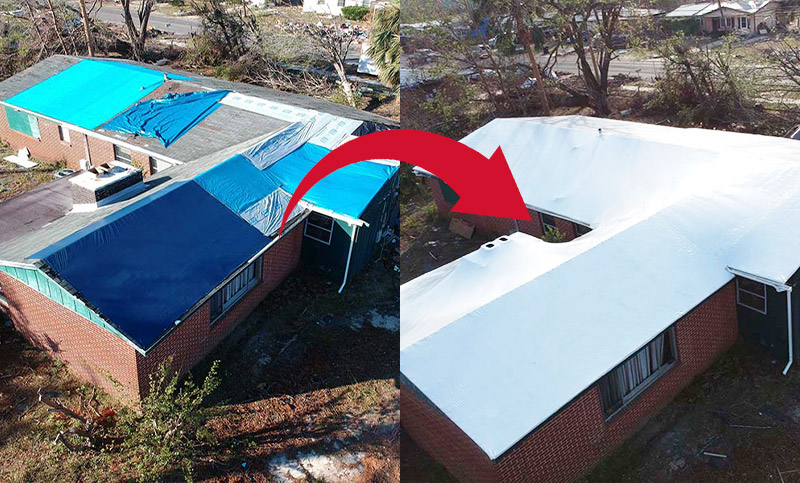Choosing the Best Tarp for Roof Protection
When it comes to safeguarding your home from the elements, choosing the right tarp for roof protection is crucial. Whether you’re dealing with storm damage, roof leaks, or waiting for a repair, the best tarp can provide temporary yet reliable cover. In this guide, we’ll explore the key factors to consider when selecting a tarp for your roof, ensuring you make the best choice for your needs.

Understanding the Importance of Roof Tarps
A roof tarp serves as a protective barrier, shielding your home from water infiltration, wind, and debris. It’s especially vital in emergency situations where immediate repairs aren’t possible. By choosing the best tarp, you can prevent further damage and maintain the integrity of your home until permanent solutions are implemented.
Key Benefits of Using a Roof Tarp
- Protection Against Water Damage: Roof tarps are essential for preventing leaks, which can lead to significant water damage if not addressed promptly.
- Temporary Weather Shield: They provide a temporary shield against adverse weather conditions, including heavy rain, snow, and high winds.
- Cost-Effective Solution: Tarps are a cost-effective way to protect your roof in the short term, especially when waiting for repairs or insurance claims.

Factors to Consider When Choosing the Best Tarp
Choosing the best tarp involves considering several critical factors. Not all tarps are created equal, and understanding these differences can help you make an informed decision.
1. Material Quality
- Polyethylene (PE): PE tarps are popular due to their waterproof nature and UV resistance. They are suitable for temporary roof protection in various weather conditions.
- Vinyl: Vinyl tarps are more durable and offer better resistance against tears and abrasions, making them ideal for long-term use.
- Canvas: While canvas tarps are breathable and eco-friendly, they may not be the best choice for long-term roof protection due to their susceptibility to water absorption.
2. Size and Coverage
- Exact Measurements: Ensure the tarp covers the entire affected area with some overlap to secure it properly.
- Standard Sizes: Tarps come in various standard sizes, so selecting one that closely matches your roof’s dimensions is crucial for effective coverage.
3. Durability and Thickness
- Mil Thickness: Tarps are measured in mils (thousandths of an inch), with thicker tarps providing better protection. A 10-12 mil tarp is generally recommended for roof protection.
- Reinforced Edges: Look for tarps with reinforced edges and grommets to ensure they can withstand wind and tension without tearing.

Types of Tarps for Roof Protection
There are different types of tarps available, each suited to specific needs. Understanding these options will help you choose the best tarp for your situation.
1. Blue Tarps
- Short-Term Use: Blue tarps are widely recognized for their affordability and are commonly used for short-term protection.
- Water Resistance: They provide decent water resistance but may not withstand prolonged exposure to harsh weather.
2. Heavy-Duty Tarps
- Long-Term Durability: These tarps are thicker and more durable, designed for extended use in severe weather conditions.
- Wind Resistance: Heavy-duty tarps are ideal for areas prone to strong winds, as they are less likely to tear or blow away.
3. Fire-Retardant Tarps
- Fire Safety: Fire-retardant tarps are treated with chemicals that prevent them from igniting, making them suitable for areas where fire hazards are a concern.
- Construction Sites: Often used in construction, these tarps provide added safety for roofing projects involving open flames or sparks.

Installation Tips for Maximum Protection
Proper installation is critical to ensuring your tarp provides the best protection. Here’s how to do it right.
1. Secure the Tarp
- Anchor Points: Use nails, screws, or sandbags to secure the tarp at multiple points along the edges.
- Overlap and Fasten: Ensure the tarp overlaps the roof’s edge and fasten it securely to prevent wind from getting underneath.
2. Avoid Pooling Water
- Sloping Surface: Position the tarp so that it slopes away from the roof, allowing water to drain off rather than pool on top.
- Periodic Checks: Regularly inspect the tarp for signs of pooling water and adjust as needed to maintain effective protection.
3. Temporary Fixes for Long-Term Solutions
- Quick Repairs: Use a tarp as a temporary fix while waiting for professional repairs to prevent further damage.
- Insurance Coordination: If applicable, coordinate with your insurance company to ensure the tarp installation is covered.
Pros and Cons of Different Roof Tarps
Every tarp type has its advantages and disadvantages. Here’s a quick overview to help you choose the best tarp.
1. Polyethylene Tarps
- Pros: Waterproof, UV-resistant, affordable
- Cons: May not withstand extreme weather for long periods
2. Vinyl Tarps
- Pros: Highly durable, tear-resistant, long-lasting
- Cons: More expensive, heavier
3. Canvas Tarps
- Pros: Breathable, eco-friendly
- Cons: Not waterproof, may absorb moisture
Common Mistakes to Avoid
While tarping your roof, avoid these common mistakes to ensure your protection is effective.
1. Using the Wrong Size Tarp
- Impact: A tarp that’s too small won’t provide adequate coverage, while one that’s too large may be difficult to secure properly.
- Solution: Measure your roof carefully and choose a tarp that fits snugly.
2. Poor Securing Techniques
- Impact: Inadequate securing can lead to the tarp being blown off or damaged, rendering it ineffective.
- Solution: Use appropriate securing methods, such as tying down with strong ropes or using sandbags.
3. Neglecting Regular Inspections
- Impact: Over time, tarps can shift or wear out, reducing their effectiveness.
- Solution: Regularly inspect and adjust your tarp to maintain optimal protection.
FAQs About Roof Tarps
Here are some common questions homeowners have about using roof tarps.
Q: How long can a tarp stay on my roof?
A: Tarps can stay on your roof for several months, but it’s best to replace them with permanent repairs as soon as possible to avoid further damage.
Q: Can I install a roof tarp myself?
A: Yes, you can install a tarp yourself, but it’s essential to follow safety precautions and secure the tarp properly to ensure it remains effective.
Q: Will my insurance cover the cost of a roof tarp?
A: Many insurance policies cover the cost of temporary roof tarps, especially in the case of storm damage. It’s advisable to check with your insurer.
Q: What is the best tarp thickness for roof protection?
A: A tarp with a thickness of 10-12 mils is generally recommended for roof protection, as it provides a good balance of durability and ease of use.
Q: Can a tarp withstand strong winds?
A: Heavy-duty tarps are designed to withstand strong winds, but proper installation is crucial to prevent them from being blown away.
Conclusion
Choosing the best tarp for your roof protection is not just about picking any cover; it’s about selecting one that meets your specific needs in terms of material, size, and durability. By considering the factors outlined in this guide and avoiding common mistakes, you can ensure that your home remains safe and secure during times of need. Remember, while a tarp is a temporary solution, its proper selection and installation can make all the difference in protecting your property.

 (832) 944-7663
(832) 944-7663